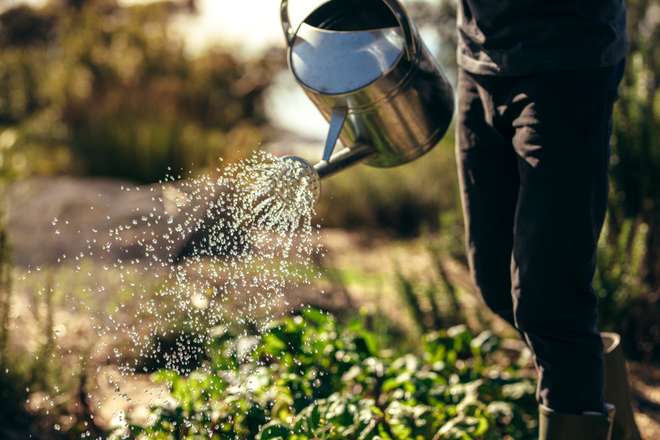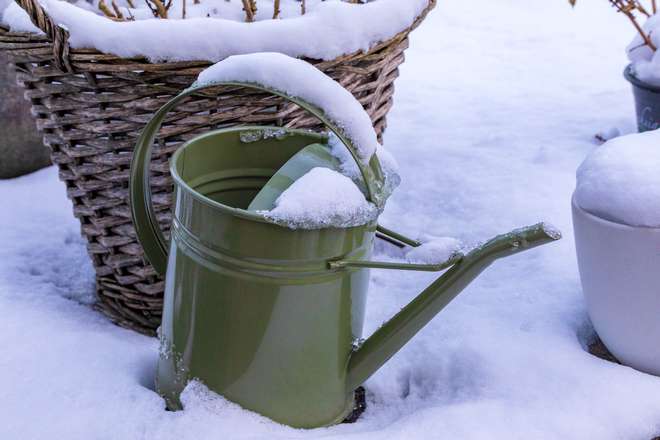
The garden appears to be dormant in the winter. Because flowering is sparse, many plants rest in preparation for the spring bloom. Even yet, the look is deceiving because the plants still require water. Some, though, more than others!
Water in winter
With the chill in the air, it’s difficult to believe that certain plants may be dehydrated and require watering in the winter. During the poor season, however, frost and especially cold winds significantly dry out the plants. It’s not uncommon for January to be virtually as dry as August. Installing a rain gauge in the garden, even if it’s a simple one, may be quite helpful in determining the exact amount of water required and watering appropriately.
Store your watering equipment
A drip system, automated sprinkler, or even a garden hose will break down if left outside. Even while garden hoses have technically developed over the years, the water they hold freezes with the cold, stretches the walls, and develops microscopic fissures that ruin the material, according to the DIY and gardening site Centrale Brico.
Remember to empty them before putting them away in a garden shed. Next spring, you’ll be able to bring them out again.
Watering in the ornamental garden
Evergreen trees and shrubs
In the winter, persistent shrubs (yew, boxwood, Elaeagnus, Aucuba, Photinia, lavender, rhododendron, Mahonia, etc.) diminish but do not halt their photosynthetic activity. As a result, they continue to lose water through evaporation and must compensate by taking water from the soil.
Keep an eye on the soil moisture. Add at least one 10-liter watering can to each mature shrub in dry, warm weather, spreading the quantity straight to the branches.
Deciduous trees and shrubs, perennials
Trees, deciduous shrubs, and perennials that have been planted for a long time are typically firmly rooted. As a result, they can manage with a shortage of water in both summer and winter without the assistance of a gardener.
Recent plants, such as newly planted fruit trees or perennials with limited root systems, should need additional attention.
In general, keep an eye on the watering of plants that are less than three years old.
During the poor season, add water once or twice a month, depending on the amount of rain recorded by your rain gauge. Add a substantial amount (enough to deeply hydrate the soil) but spacing it out over time.The soil will dry out on the surface but will remain sufficiently moist in the lower layers, encouraging the plant to root deeply.

Potted plants
Planters containing shrubs, perennials, or biennials (such as pansies) in plastic or terracotta pots and planters are more prone to drought. Because the roots are exposed to the elements, they are more susceptible to the drying impacts of wind, sun, and frost.
Furthermore, when rains saturate the leaves, they might have a hard time penetrating the foliage to effectively hydrate the ground. Waterings on a regular basis are encouraged. Consider covering the soil with a thick mulch to prevent it from drying out.
Watering in the vegetable garden
Only crops seeded in the autumn should be monitored in the vegetable garden. Excluding for onions and garlic, all of these crops (except peas, broad beans, winter salads, lamb’s lettuce, and spinach) require water in the winter.
Outside of frost, water directly at the base of these plants with the neck of the watering can. Allow the water in the watering can to warm up in the sun throughout morning to reduce the danger of thermal shock. Watering should be done in the early afternoon.
Watering inside
Heating is a common issue with our interiors in the winter! Wood fires, fireplaces, and radiators dry up the air far too frequently, which many plants despise! You’d assume that simply increasing the frequency of watering, the problem would be solved.
In actuality, this simply adds to the challenges, because high temperatures combined with heavy humidity do not mix! Root rot is a common outcome of this.
As a result, space your waterings for your indoor plants. If feasible, relocate them to a cooler room away from a source of heat.
Finally, pour rainfall on the leaves or place the pots in cups packed with wet clay balls to produce a humid atmosphere around the aerial sections.
